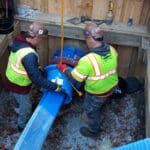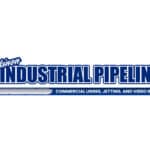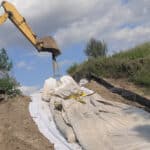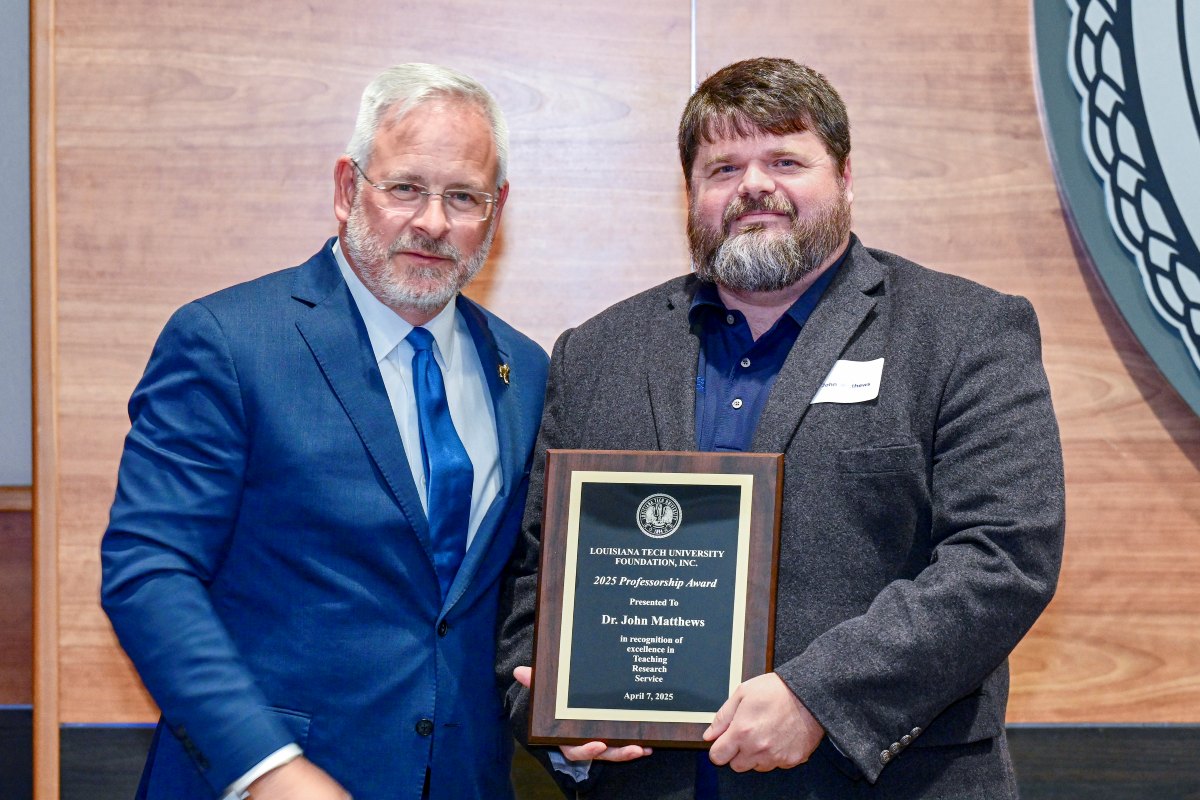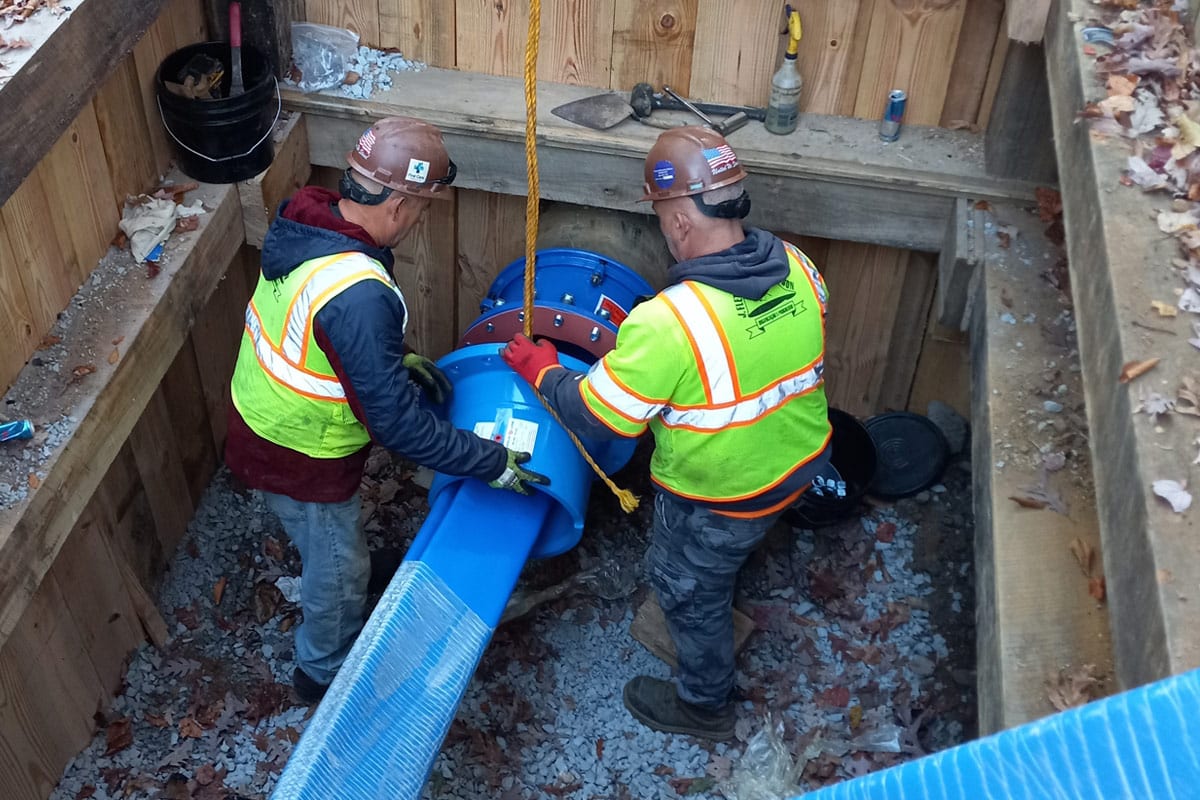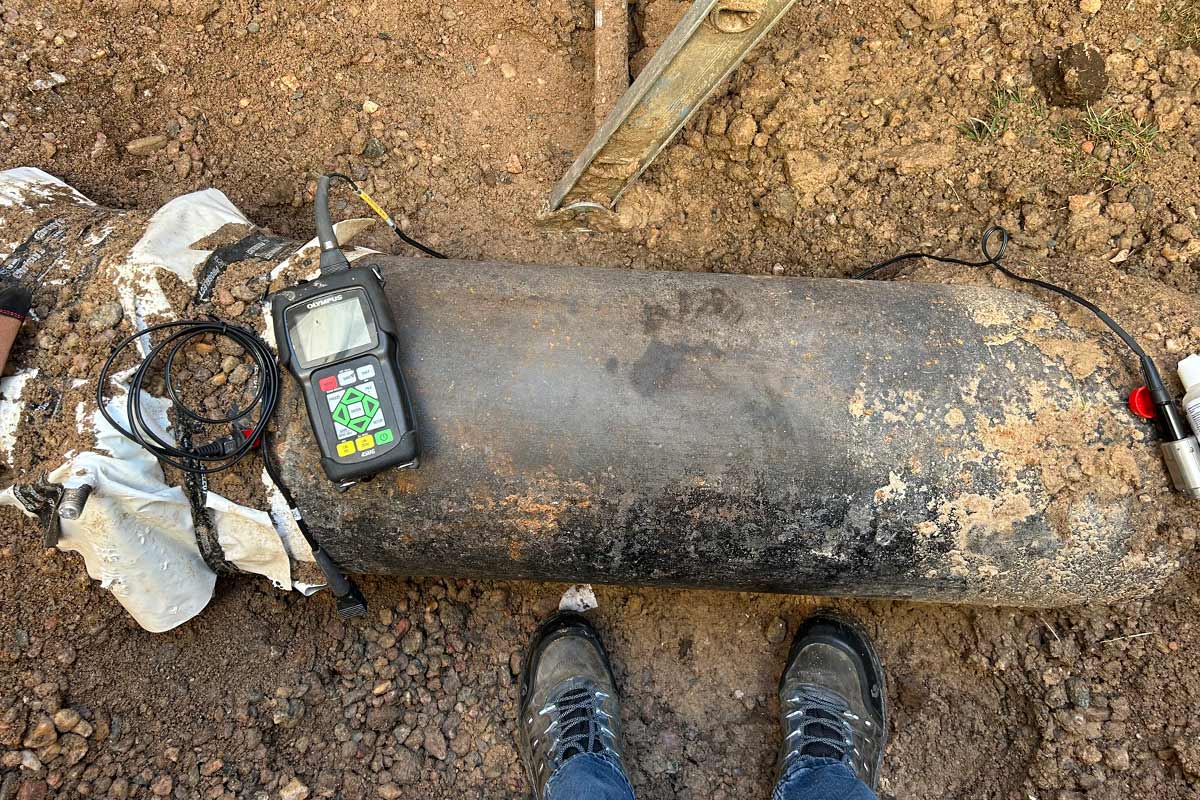
De Soto Saves $40 Million with Water Main Condition Assessment & Cleaning
At a time when the De Soto, Kansas-water supply needed to be reliable, flow in a critical water line was showing signs of restriction.
De Soto’s population has increased more than 10 percent. This rise is due to recent commercial and residential development. At the same time, construction was under way on a $4 billion Panasonic electric vehicle battery manufacturing facility, the largest economic development project in Kansas’ history. These factors were driving up the demand for water.
A critical two-mile section of the city’s primary raw water main that supplied the city’s infrastructure was experiencing reduced flow. Sediment and debris built up over more than 70 years was restricting flow in the 16-in. line. The city needed help to restore flow rates and evaluate the condition of the pipeline to determine next steps.
De Soto water managers partnered with BlueWater Solutions Group and American Pipeline Solutions (APS) on a multi-phase strategy. This strategy included cleaning the pipeline and doing a condition assessment. The results and data would be vital to determining plans for targeted repairs or full replacement.
Pipeline Cleaning
The raw water main runs from wells located north of the Kansas River, beneath the river, and south to the city’s water treatment plant for treatment and transmission to residents and businesses.
A progressive pigging process was designed to restore full capacity. Pipeline pigs of varying sizes and densities were launched sequentially. They were propelled by water pressure to dislodge and remove sediment and debris. A cut-out section of the pipe revealed up to 2 in. of sediment buildup around the interior of the pipeline. The effective diameter of the pipeline was reduced from 16 in. to 12 in.
Due to the high demand for water during the day, water pressure to propel the pigs for cleaning the line was not adequate. So, the teams pivoted operations from day hours to nighttime, when the water demands were reduced. Working through the night, the crews used generators. Floodlights were also used. The pigging process was executed without interrupting the city’s water supply.
The reduced diameter of the pipe, multiple bends, and the river crossing increased the risk of a pig becoming stuck. Pigs of varying sizes and geometries were selected to ensure they kept moving while continuing to clear the sludge. After each pass, the APS team evaluated the results and adjusted the type and density of the next pig to match pipeline conditions and sediment load.
Condition Assessment
After the cleaning, APS deployed i2i’s SmartFoam Pig. This combines the benefits of advanced electromagnetic eddy current sensor technology with cost-effective and easy to deploy foam pigs.
The in-line inspection tool negotiates complex geometry pipelines. It inspects for internal corrosion and cracking. Additionally, it accurately profiles pressure, temperature, and velocity along the length of the pipeline.
After a test run to confirm the pipe’s size and clearance, the pig was launched. Along the two-mile section of the pipeline, it collected data that was uploaded to the cloud. This data was then analyzed by i2i’s team. In less than an hour, the data confirmed that the pig run was successful. With the precision location tracking, the crew knew where the pig was during the entire run. An initial report was delivered within two days, with the final data analysis in under two weeks.
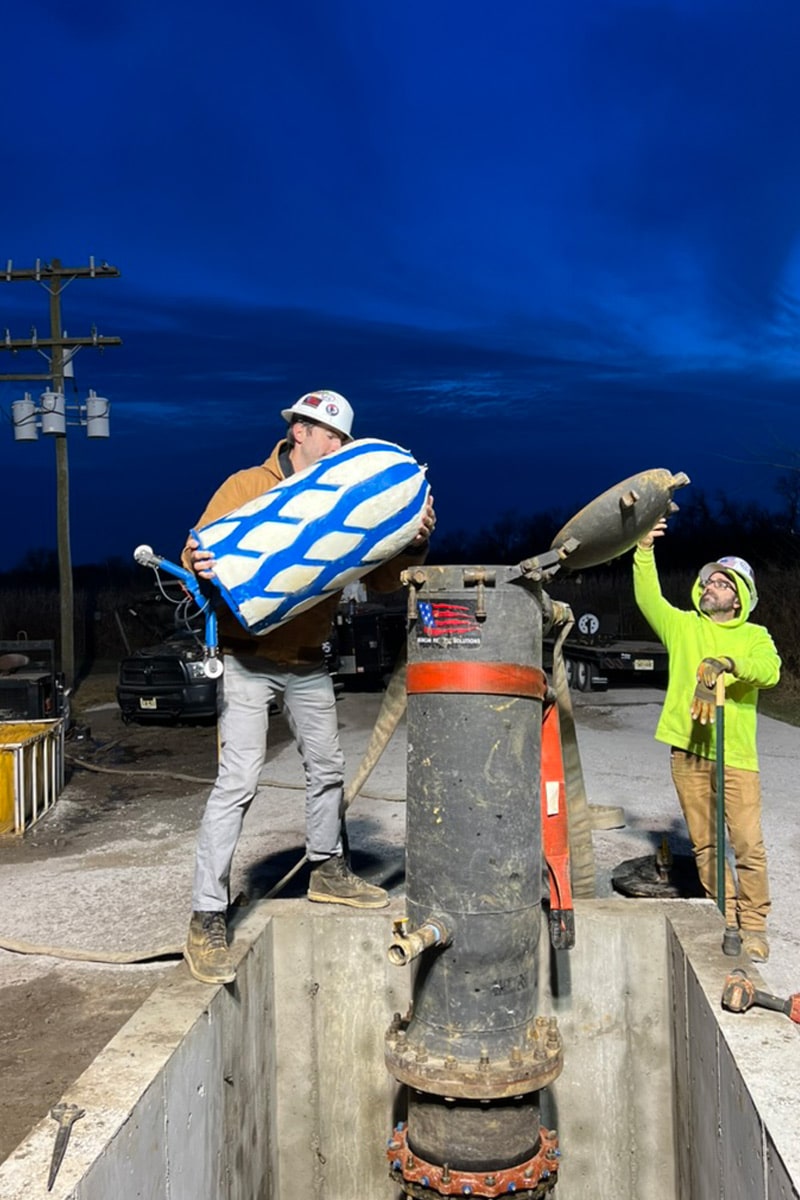
Verification Digs
The report identified four areas of concern or anomalies including deflected pipe joints and thinning walls. To verify the findings, the crew excavated digs at each area of location using the mapping coordinates. Once exposed, the team measured residual wall thickness, angles of deflection that exceeded specifications, and other key measures. The digs verified the accuracy of the condition assessment findings. As a final step, the siphon was “dewatered” using a smaller siphon with a CCTV robotic unit.
Good Condition Confirmed
Interpretation of the data from the smart pig condition assessment confirmed the pipeline was in overall good condition, with minimal levels of corrosion and no leaks. The identified anomalies had wall loss not exceeding 10 percent. The pipeline was deemed to have 30 to 50 years of useful service life.
With accurate data pinpointing areas of concern for the city to monitor, city leaders avoided costs of up to $40 million. This was by not proceeding with major repairs or replacement with a larger pipe. Instead, a preventive maintenance plan was adopted. It included routine pigging, inspections, and pressure monitoring.
The two-phased pigging project was a success. Cleaning improved the pipeline’s flow, and the condition assessment confirmed the structural integrity of the water main. Post-cleaning, the flow rates and operating pressures were restored to satisfactory levels for both the current demands and future needs at the Panasonic manufacturing facility.
Blake Murphey is president of American Pipeline Solutions (APS).
Latest Posts
- NASSCO Report – FFRP Trenchless Rehabilitation of a 9,100-ft Raw Water Transmission Main
- Sarkinen Industrial Pipelining Expands Services
- Ensuring Quality and Longevity in UV-Cured CIPP Liners
- CIPP Collaboration Restores Major MDOT Culvert Crossing
- Utility Investigation School Slated for January
Next Up
HDD Academy | February 19-20, 2026 | Scottsdale, Arizona | Learn more

